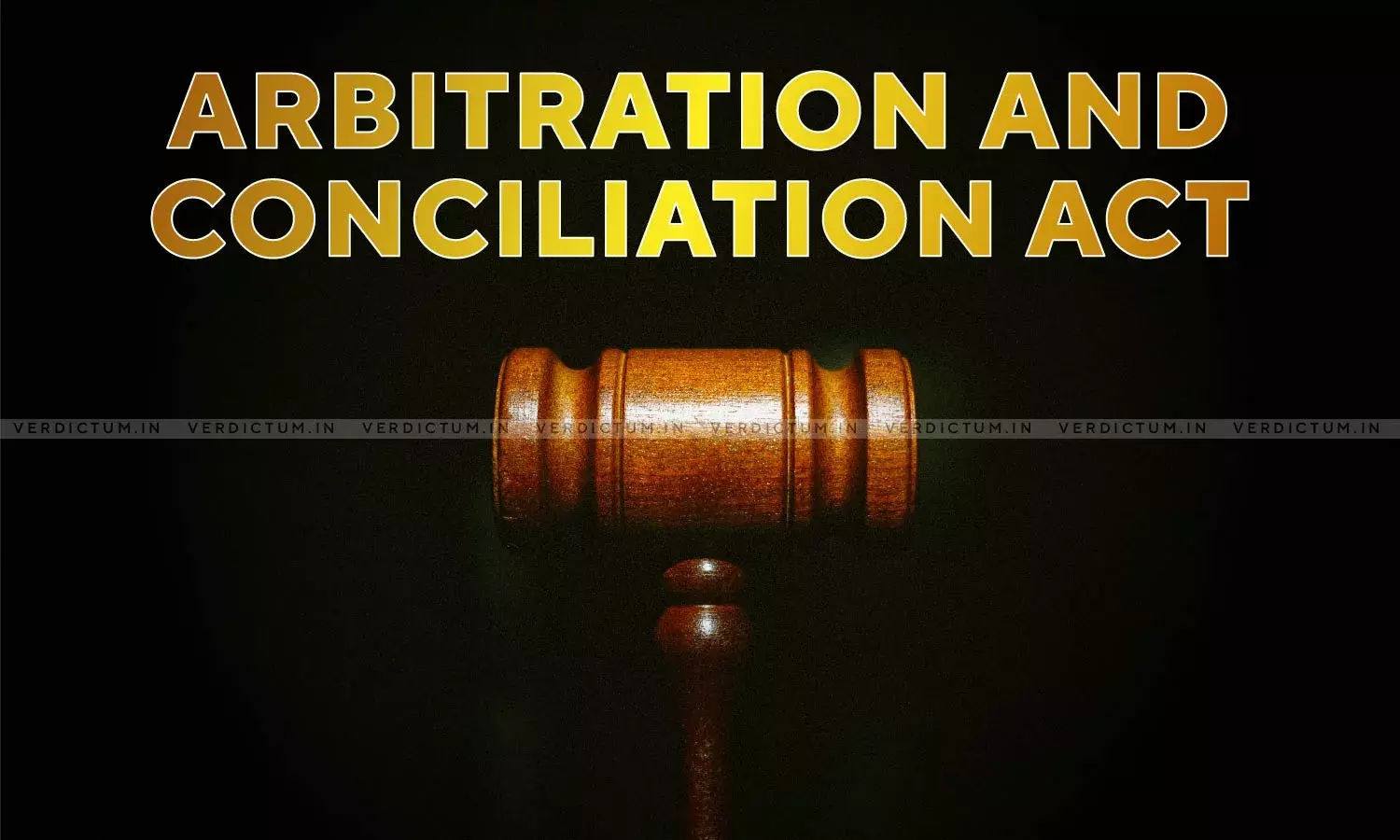Column| Section 34 Of Arbitration And Conciliation Act: Is Non-Filing Of Signed Copy Of Arbitral Award Fatal?
In order to determine whether it is mandatory to file a signed copy of the arbitration award with an application under Section 34 of the Arbitration and Conciliation Act, it is essential to carefully examine the provisions of Section 34.
Section 34(1) states that recourse against an award can only be made through an application for setting aside such award in accordance with sub-sections (2) and (3) of section 34. Therefore, the only requirement under section 34(1) is compliance with sub-sections (2) and (3) of section 34 to approach a court to challenge an arbitral award.
Section 34(2) outlines the grounds on which an arbitral award can be challenged, and it provides that these grounds may be established based on the record of the arbitral tribunal.
Section 34(3) specifies the time period within which an application for setting aside an award may be made, which is three months from the date of receipt of the arbitral award by the applicant.
Apart from Sub-sections (2) and (3) of Section 34, Sub-section (5) was inserted by way of an amendment to the Act in 2015, which mandates the issuance of a prior notice to the other party before filing an application under Section 34.
Upon careful examination of the provisions of Section 34, it becomes evident that while certain requirements have been made mandatory before filing an application for setting aside an award, the filing of a signed copy of the award is not one of them. At the same time, it is important to note that Section 34 also does not explicitly state that an application under Section 34 can be filed on the basis of a photocopy of an award. Thus, it can be said that Section 34 is silent on this aspect.
However, Section 31(5) of the Act comes into play, which provides that after an arbitral award is made, a signed copy shall be delivered to each party.
The relevance of Section 31(5) has been emphasized in several judgments, such as Dakshin Haryana Bijli Vitran Nigam Ltd. v. M/s Navigant Technologies Pvt. Ltd., Civil Appeal No. 791/2021. The Supreme Court held that the receipt of a signed copy of the award is the date from which the period of limitation for filing objections under Section 34 would have to be reckoned, not the date on which a draft award is shared with the parties.
Similarly, in Union of India v. Tecco Trichy Engineers & Contractors, (2005) 4 SCC 239, it was held that the provisions of Section 31(5) of the Act are not mere formalities but matters of substance since the service of the award upon the party triggers several periods of limitation and brings into effect the termination of the arbitration proceedings under Section 32(1) of the A & C Act.
Furthermore, in State of Maharashtra and Others v. Ark Builders Private Limited, (2011) 4 SCC 616, the Court reiterated the above position, stating that the service of the award upon the Advocate of the party would not be considered as service of the award upon the party.
The collective analysis of these important judgments demonstrates the relevance of Section 31(5) concerning the computation of the limitation period for filing an application under Section 34. A photocopy of a signed copy of the award filed with an application under Section 34 would still indicate that the applicant received a signed copy of the arbitral award from the arbitrator, unless the applicant states otherwise.
Recently, the Bombay High Court in the matter of Rahul s/o Omprakash Gandhi v. The Akola Janta Commercial Co-Operative Bank Ltd., Writ Petition No. 6091/2022, referred to the Tecco Trichy and Ark Builders judgments and drew a distinction. The Court observed that the purpose of Section 31(5) of the A & C Act, which states that a signed copy of the award shall be delivered to each party, is to make the party aware of the nature, effect, and import of the award. This enables each party to decide whether to challenge the award further by instituting appropriate proceedings under Section 34 of the A & C Act before the Court or to seek corrections, interpretations, or an additional award by filing an application under Section 33 of the A & C Act before the Arbitrator.
The Bombay High Court also referred to two other judgments. First, National Agricultural Co-operative Marketing Federation of Indian Ltd. v. M/s. R. Piyarelall Import and Export Ltd. AIR 2016 Calcutta 160, wherein it was held that the legislative intent was not to require all copies of the award to be separately signed by the arbitrators. A certified photocopy of the original award along with the signatures of the members of the Arbitral Tribunal would suffice.
Second, the Court referred to K. Vasudeva Maniakarar&Ors. v. S. Radhakrishnan &Ors., LAWS (MAD) 2020 1 569, which also holds the position that non-serving of the copy of the award does not make the award invalid, and the purpose of service of the award copy is only to enable the parties to challenge the award and compute the limitation under Section 34(3) of the A & C Act.
Therefore, the signed copy of the arbitral award assumes relevance only for the computation of the limitation period and not when an application for setting aside an award under Section 34 is filed based on a photocopy of a signed award.
This view finds support from the judgment of the High Court of Delhi in the matter of Ambrosia Corner House Pvt. Ltd. v. Hangro S Foods, O.M.P. (COMM) 323/2022, where the High Court explained what constitutes a non-est filing. In this case, the petitioner filed an application under Section 34 without a copy of the award on the last day of the expiration of the limitation period. On objections raised by the registry, the defect was cured. The Court observed that a more liberal approach should be adopted by the Court while considering whether a filing should be treated as 'non-est.' A filing can be considered 'non-est' if it is filed without signatures of either the party or its authorized or appointed counsel. The High Court noted that the right to prefer objections to assail the arbitral award under Section 34 of the Act is a valuable right and cannot be denied unless the party concerned has clearly failed to file the objection petition within the strict period of limitation prescribed under the Act.
In conclusion, an application under section 34 filed with a photocopy of the award cannot be held as a non-est filing, especially when the applicant certifies the award to be a true copy and affirms the authenticity of the award through an affidavit. If the genuineness of the copy of the award filed with the application is disputed by the respondent, the contents of the award can be verified from the record of the arbitral tribunal.
[The opinions expressed in this article are those of the authors. Verdictum does not assume any responsibility or liability for the contents of the article.]












